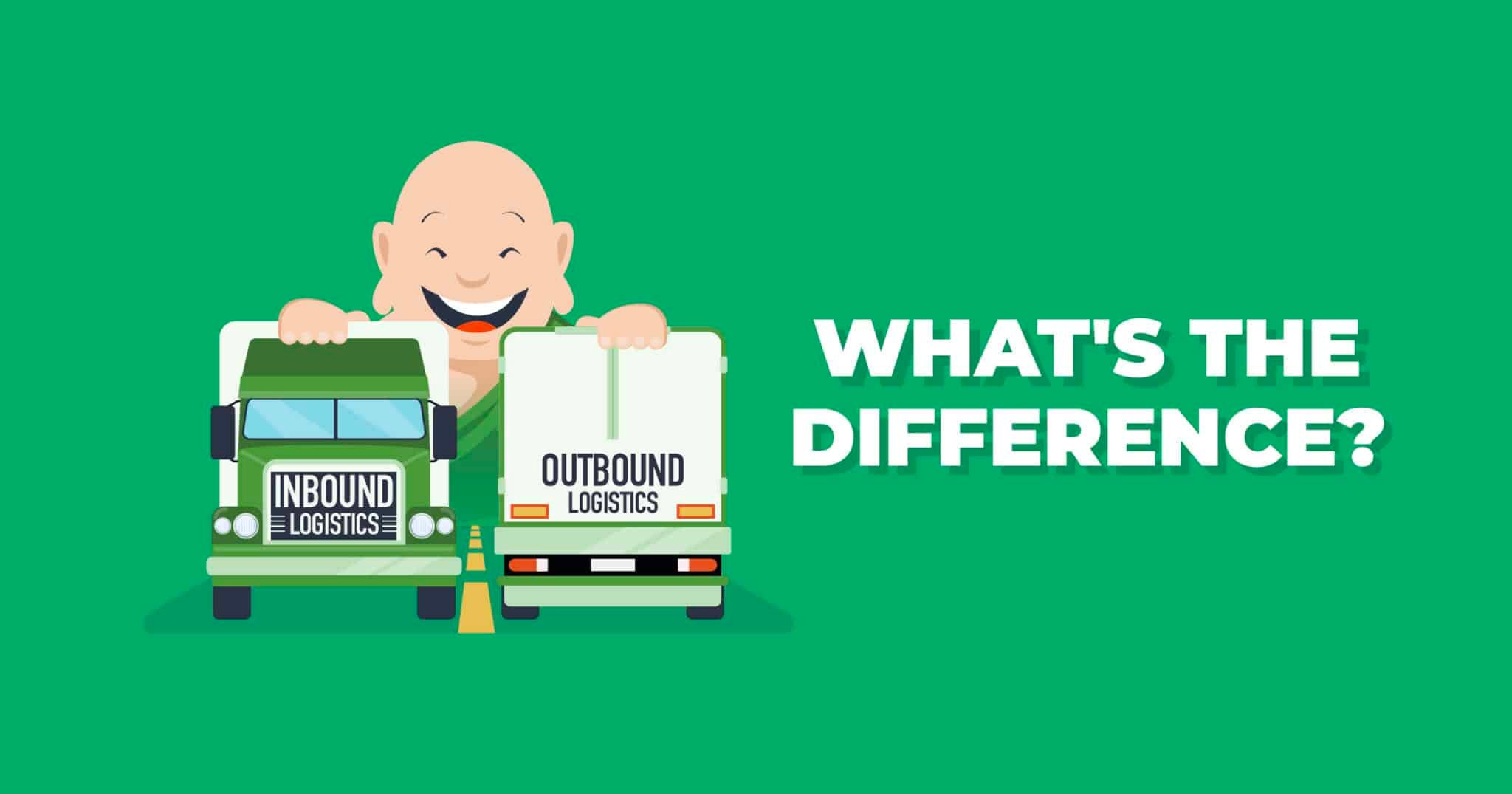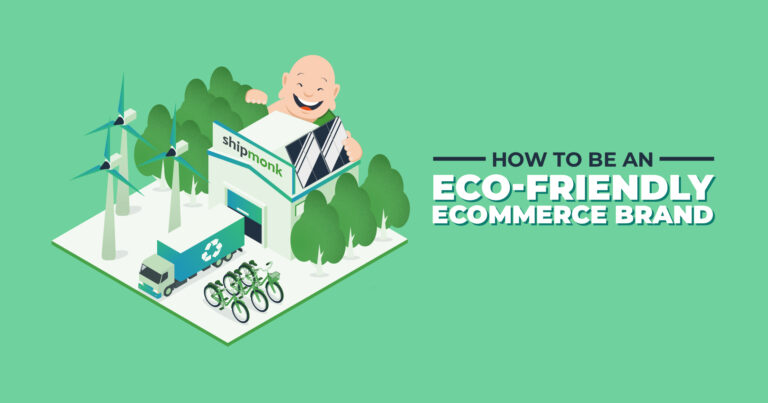Inbound Logistics vs. Outbound Logistics
The realm of fulfillment has a lot of terminology. Today, we’re talking about the difference between inbound logistics and outbound logistics. Both of these are vital to your fulfillment process, as they deal with the receiving and sending of your products.
At a glance, inbound logistics and outbound logistics refer to the different stages that goods go through while moving down the supply chain. Each logistics aspect is tied to transportation. However, inbound logistics deals with matters of supplying newly manufactured inventory to warehouses and fulfillment centers. Meanwhile, outbound logistics pertains to fulfilling orders out of warehouses and fulfillment centers, typically to B2C or B2B customers. Understanding both layers of the logistics process can help eCommerce business owners optimize their supply chain, manage customer expectations, and make better decisions about ordering, budgeting, and shipping options.
Inbound Logistics
Diving deeper, inbound logistics is the part of the eCommerce fulfillment process that involves the receiving of materials and products from a supplier or manufacturer. These goods are received at a warehouse or 3PL fulfillment center. There may be several stops along the way there, depending on each eCommerce brand’s supply chain (distributors, number of manufacturers, type of 3PL company you’re working with). In general, some significant steps in the inbound logistics process include:
- Sourcing or purchasing materials and products
- Keeping track of what has been ordered
- Maintaining a thorough means of tracking the freight and shipping entities transporting ordered goods
- Having teams at warehouse/fulfillment centers in charge of receiving, slotting and storing inventory where it belongs
- Utilizing advanced inventory management software to manage inventory at your warehouse/fulfillment center
Note – with inbound logistics it is important to have “reverse logistics” processes in place. Reverse logistics handles returns and exchanges. The shipments that customers send back to your warehouse or fulfillment center must be examined for defects or damage, accounted for properly, and then processed before inventory is updated. ShipMonk offers a bevy of reverse logistics options to control costs on returned customer orders. A few include: return to stock, donate, dispose, rework (ex. apparel refolds), and return to vendor. Learn more about ShipMonk’s eCommerce fulfillment services.
Outbound Logistics
Outbound logistics refers to the part of the fulfillment process that moves completed goods (end product) to the customer (end user). In other words, outbound logistics services handle the shipping of orders from the warehouse or fulfillment center to the customer and handles customer service related to those deliveries. Actions required for a strong outbound logistics process include:
- Processing orders in an accurate, timely way through your eCommerce brand’s online store
- Managing orders through reliable inventory management software that puts purchases in your queue and incites a fulfilling action at your warehouse or fulfillment center
- Picking and packing ordered products efficiently and accurately (often with the help of AMRs)
- Updating inventory counts to ensure accurate stock levels at all times
- Sorting processes to get goods labeled correctly and passed on to the correct carrier for the designated type of shipping service selected (i.e. overnight shipping, standard shipping, etc.)
- Having trustworthy carriers like FedEx, UPS, USPS and DHL pick up and ship the finished goods to their final destinations
Best Ways to Optimize Inbound Logistics and Outbound Logistics Processes
Good entrepreneurs are happy with their success; great entrepreneurs are always trying to take it to the next level. If you are an eCommerce brand that works with an awesome and tech-advanced 3PL fulfillment company like ShipMonk, you are already in the right place to be at the forefront for advancement in all aspects of the logistics process. If you’re not a part of our eCommerce family yet, at the end of the day, the best way to improve your inbound logistics and outbound logistics systems is through technology and optimized processes. Here are a few specific tips for how to stay at the top of the logistics game:
1. Keep an Eye on Your Inventory
As you experience business growth, your SKU count and necessary warehouse space will go up too. In order to keep the increased budget required for both from breaking you, it is vital that you consistently monitor your inventory. That entails carefully analyzing your supply and demand, keeping an eye on the time it takes to get products from your manufacturer or supplier, watching out for seasonal shifts and utilizing reliable data-tracking software. Why be so detail-oriented? Answer: how much inventory you stock and how frequently it is sold will affect your cost in intense ways. For example, products that have a slow turnover rate will cost you extra storage dollars you could be saving. Also, properly managing your inventory can reduce the risk of backorders and thus promote greater customer satisfaction.
2. Create Strong Relationships
Why have enemies when you can have friends? This is as true on the playground when you’re a six-year-old as it is when you do business as an adult. With eCommerce being such a competitive space, building and maintaining strong relationships with everyone from your manufacturers to your shipping carriers is crucial. Good relationships can lead to reduced timeframes for getting and sending products, better deals that save money (volume discounts, expansion options, etc.), long-term partnerships, and other favorable terms. You can begin to build these strong relationships by being a great client yourself, i.e. paying on time, respecting order and shipping requirements, increasing the amount of business you give people over time (demonstrating growth and commitment), and just being a nice person!
3. Use the Right Fulfillment Resources
You can’t sail successfully to an island if your boat has holes. You can’t win a hotdog eating contest if you already had a large pancake breakfast. Your eCommerce brand can’t scale to its highest potential if you don’t have the right tools and partners in place to streamline systems, accurately track inventory, and deliver on your customer promise. One central part of this is technology, as we mentioned before in this blog. You need the best, most-advanced software to keep track of your inventory and analyze data so you can strategically reorder. Additionally, technologically advanced robotics for sorting, picking, and packing can speed your inbound and outbound logistics processes along without compromising accuracy.
Last, but most certainly NOT least, is working with a top fulfillment company like ShipMonk to handle your receiving and shipping, combining advanced software and robotics with fulfillment specialists who ensure your inbound and outbound logistics flow as smoothly as possible.
Bound for Greatness!
The main takeaway about the difference between inbound logistics and outbound logistics is that inbound relates to receiving goods from the manufacturer or supplier who made them and outbound involves getting those finished products from your warehouse or fulfillment center to the customers who purchased them.
Across all of our fully-integrated fulfillment centers, ShipMonk is set up to successfully help your eCommerce brand navigate both these aspects of the fulfillment process, along with all others. Our tech and team are bound to make a difference in your business as we make navigating the supply chain, managing your inventory and keeping your customers happy easier than ever before. Learn more about the layers that go into our award-winning logistics systems on our website now, or contact us directly for a quote.



